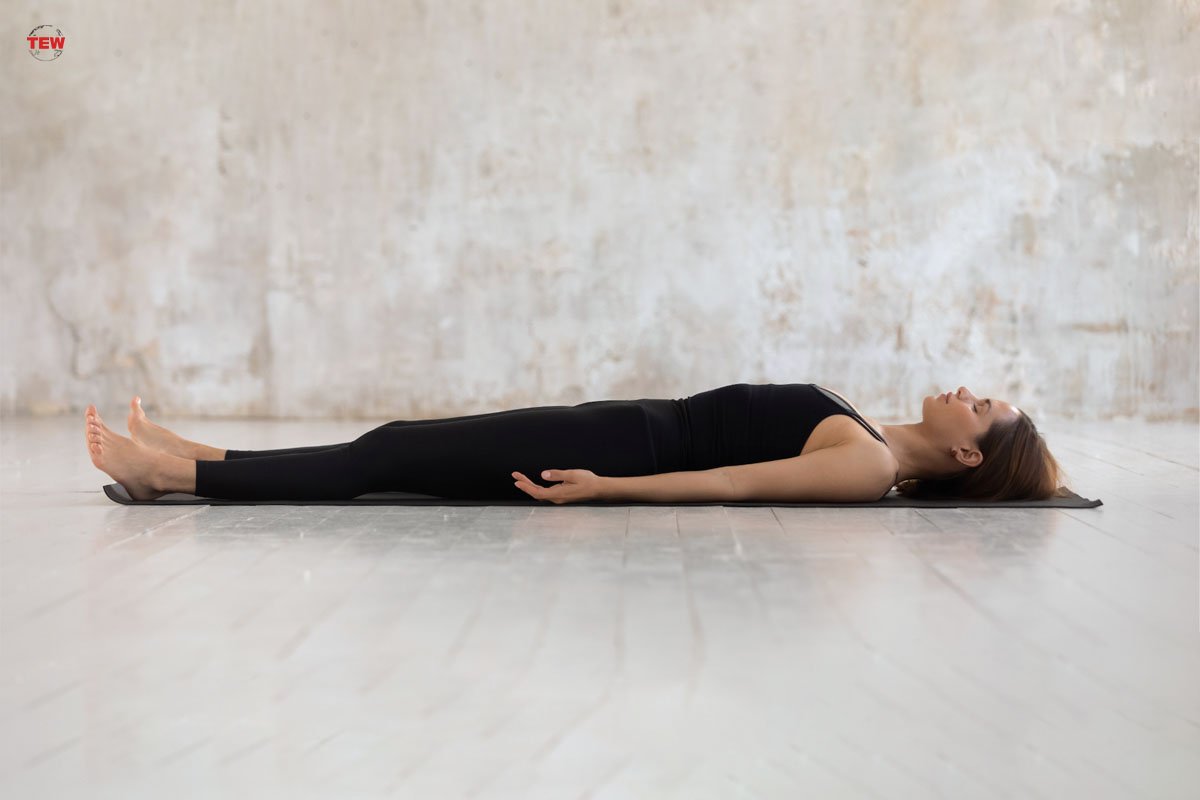Unlike in the olden days, you don’t really need a yogi or yogini to teach you how to do the yogasanas. A big thanks to Tim Berners-Lee, who first proposed the idea of the internet in 1989, a moment that led you to search about yogasanas, and ultimately to us.
Although originated in India, Yogasana is practiced for thousands of years globally. And despite being an old practice, its benefits still apply today. Here’s the thing though: Yoga doesn’t discriminate. People of all shapes and sizes can start their journey at any age—it will benefit your mind, body, and soul tremendously.
While there are many types of Yogasana to get your journey started, we have handpicked our top 7 beginner-friendly yogasanas so you don’t have to. Your journey starts in 3…2…1..!
1. Sukhasana
Start easy. No, literally. Begin with Sukhasana, also called an Easy Pose. In Sanskrit, Sukh means Happy. This is one of those types of yogasana that aims to put you in a content, meditative state.

- Steps-by-Step Instructions:
Step 1: Start in a seated position. Bend and widen your knees and cross your shins. Slip each foot beneath the opposite knee and bring the shins toward your torso.
Step 2: Sit in a relaxed position, making sure there’s a comfortable gap between your feet and pelvis.
Step 3: Do not tilt your pelvis forward or back. Keep it in a neutral state.
Step 4: Straighten your shoulder blades
Step 5: Ensure that your body weight is balanced across sitting bones
Step 6: Take a deep breath and exhale after around 3 seconds
Step 7: Exchange the cross position of the legs and do this pose for approx. 1 minute on each leg.
- Benefits:
1. The combination of increased postural awareness and the meditative state it creates helps you relieve stress.
2. Holding the muscles helps you strengthen your core muscles.
- Difficulty Level: ★☆☆☆☆
2. Tadasana
‘Tada’ in Sanskrit means mountain and ‘asana’ means pose. P.S. You’re going to hear about the ‘asana’ part a lot as you read ahead.
This beginner-friendly pose is sometimes also called a mountain pose. Moreover, Tadasana is often a great pose to practice before beginning the standing poses.
- Step-by-Step Instructions:
Step 1: Stand with your feet slightly apart from each other while maintaining balance.
Step 2: Inhale and raise your arms above your head. With your palms facing up and vision ahead, mesh up your fingers together.
Step 3: Exhale and lift your shoulders toward your ears. Return the shoulders to their original position and lower your spine as you straighten your posture and open up your chest.
Step 4: Relax your muscles
Step 5: Return to Starting position

- Benefits:
1. There are various types of yogasana that help with your lower back pain, and this is no exception. Tadasana will work wonders for the pain, tightness, and stiffness of your lower back. The pose is especially helpful for people with sedentary life or who have a bad posture or slouch, as it stretches your spine.
2. Tadasana improves metabolism and helps you stay at your ideal weight by keeping obesity-related problems at bay.
3. Aids in clearing clogged-up lungs caused by pollution or asthma or COPD, helping you breathe easy.
4. Rejuvenates mind and body improving memory, focus, and concentration.
5. Alleviates stress, anxiety, as well as depression in some cases.
Difficulty Level: ★☆☆☆☆
3. Uttanasana
One of the most beginner-friendly types of yogasana, Uttanasana is a part of the Surya Namaskar Routine. The asana is a full-body stretch pose where you stand with your upper body folded forward. Here’s what that name means in Sanskrit: ‘Ut’ means intense, ‘tan’ means stretch, and you already know what ‘asana’ means.
- Step-by-Step Instructions:
Step 1: Stand straight with hands resting on your side
Step 2: Inhale deeply
Step 3: Exhale and slowly bend your knees forward while slightly moving your tailbones and hips back
Step 4: Rest your hands on the ground next to your feet where your chest should be above your feet.
Step 5: Ensure that your hamstrings are feeling the stretch. If not, extend your knees a bit more.
Step 6: Maintain the position for 5 to 10 seconds
Step 7: Engage your core, and inhale as you put your hands on your knees
Step 8: Slowly come back to the initial mountain pose.

- Benefits
1. If you’re someone who sits for a longer period of time, Uttanasana is an ideal pose for you to practice.
2. Helps you stretch hamstrings, hips, and calves for better mobility.
3. Strengthens your legs and makes your spine strong yet flexible
4. Regular practice of Uttanasana improves blood circulation
5. Energizes you by eliminating fatigue and exhaustion
6. Improve sleep pattern and helps insomnia
Difficulty Level: ★☆☆☆☆
4. Trikonasana
Trikonasana is one of the types of yogasana that has both mental and physical benefits. Interestingly, many many people start their yoga session with this pose. However, it is important to know that this pose should not be held for a longer period of time if done at the session start. On the other hand, you can end your yoga session by doing this asana for a long time.
- Step-by-Step Instructions
Step 1: Stand straight with your legs apart
Step 2: Inhale, and raise your right hand straight above your head, parallel to the right ear
Step 3: Exhale and bend your torso from the waist to your left
Step 4: Slide your left arm down next to your left leg till your fingers are at your ankle
Step 5: Make sure your right arm is horizontal as your head is tilted left
Step 6: Hold the pose for 30 seconds, keeping your knees and elbows straight
Step 7: Inhale, stand straight, and repeat the same process for the other side

- Benefits
1. Tackles digestive issues such as indigestion, gastritis, flatulence, and acidity.
2. Increases spine flexibility and helps reduce backache
3. Helps tone your whole body along with aligning shoulders for an ideal shape
4. Brings relief from menstruation-related issues such as menstrual cramps
5. Releases happy hormones and reduces stress
6. Reduces inflammation
Difficulty Level: ★☆☆☆☆
5. Dhanurasana
Ever heard about the types of yogasana called “Bow-gasanas?” Probably not, because we just made that up. However, Dhanurasana is a back-bending pose where your body actually looks like a bow. As a result, it’s also known as the “Bow Pose.” What’s impressive is that the mentions of Dhanurasana can be traced back to the 19th Century texts.
- Step-by-Step Instructions
Step 1: Lie on your stomach, making sure your feet are apart
Step 2: Keep your hands on the side of your body
Step 3: Bend your knees slowly and bring your hands back to grab your ankles
Step 4: Take a deep breath, and as you do that, lift your chest up from the ground while pulling your legs backward
Step 5: Keep your vision ahead
Step 6: Hold the position for approx. 15 to 20 seconds
Step 7: Exhale deeply as you bring your legs and chest to the ground to release the pose

- Benefits
1. Prevents gastrointestinal problems such as bloat, constipation, IBS, and more.
2. Improves your daily activity by strengthening your core
3. Improved flexibility prevents problems like herniated disc, slip disk, and others.
4. Releases muscle tension from the lower back along with pain and stiffness.
5. Improves your upper-back strength for better movement
Difficulty Level: ★★☆☆☆
6. Bhujangasana
This is a back-bending types of yogasana that makes you look like a hood-raised cobra. Because of this visual characteristic, it is also known as the cobra pose. ‘Bhujanga’ is a Sanskrit word that means snake or Cobra.
- Step-by-Step Instructions
Step 1: Place your palms flat on the ground under your shoulder
Step 2: Take a moment and pause, as you look at the ground with your neck in a neutral position
Step 3: Extend your toes back and press all toenails down to activate your quad
Step 4: Rotate your inner thighs upward to broaden your lower back
Step 5: Lift up your head and chest as you roll your shoulders back and down, as you lightly press down with your hands
Step 6: Focus on lifting your chin while keeping the back side of your neck long
Step 7: Keep your arms straight while keeping your shoulders away from the ears
Step 8: Release the pose

- Benefits
1. Reduces stiffness of your back if any along with the pain
2. Helps tone up stomach muscles in addition to the shoulders and arms
3. Enhances mood and improves energy levels
4. Improves Posture and Increases Confidence
5. Soothes sciatic nerve pain
6. Increases lung capacity and reduces asthma-related problems
7. Helps Recover Menstrual-Related irregularities
Difficulty Level: ★☆☆☆☆
7. Savasana
Finally, cool down with Savasana. After engaging in various types of yogasanas, Savasana helps you relax as it brings your heart rate and breathing to normal levels. Corpse Pose, as it’s alternatively called is an ancient 15th-century pose. Additionally, Savasana uses a combination of Yoga Nidra Meditation and relaxation to increase your overall awareness.
- Step-by-Step Instructions
Step 1: Lie down on your back
Step 2: Let your feet and arms flop open
Step 3: Relax your arms a few inches away from your body as your palms face the sky
Step 4: Close your eyes and take slow deep breaths through your nose
Step 5: Relax your whole body by making any needed adjustments

- Benefits
1. Brings your increased heart to normalcy after all the exercises
2. In addition to calming your mind, it also relaxes each part of your body. This teaches your body to tackle stressful triggers calmly, without any unnecessary panic
3. Eases pain and inflammation of the joints and muscles
4. Regulates emotions and balances the nervous system
5. Helps you become more conscious and aware of your surroundings, helping you feel more connected
Difficulty Level: Zero
Balance is the Key
In today’s chaotic world, good health is one of the key factors that could give you an advantage over others. When we say health, it could be anything from your mind, body, or even your soul. If you are on the lookout to start your yoga journey, the types of yogasana mentioned above are exactly what you need to strike that much-needed balance in life.





